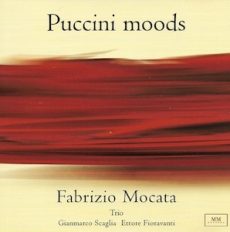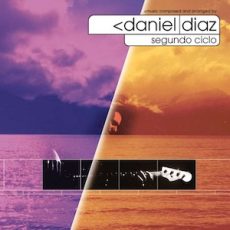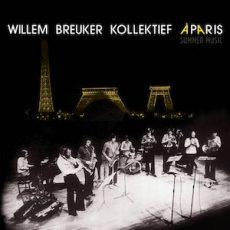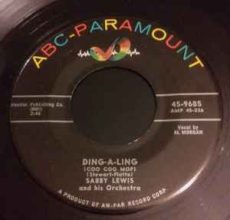
Daily Dose Of Jazz…
Fabrizio Mocata was born on December 8, 1977 in Sicily, Italy. He established himself as a maestro in the music business thanks to his knowledge of the primary jazz genre and proficiency in the subgenre of smooth jazz.
His music seamlessly combines the rich traditions of jazz, classical music with smooth jazz. His creativity is distinguished by his combining complex melodies and harmonies.
Mocata is a well-known talent in the jazz world and has had an enduring impression on the jazz community.
Pianist, arranger and composer Fabrizio Mocata continues to create and perform.
More Posts: arranger,bandleader,composer,history,instrumental,jazz,music,piano

Daily Dose Of Jazz…
Alan Plachta was born on November 30, 1981 and raised in Buenos Aires, Argentina. Recently recorded in NYC his last album “Un viaje” in collaboration with Richard Nant, featuring Luis Perdomo on piano, Sam Sadigursky on reeds, Satoshi Takeishi on drums and Matt Pavolka on bass.
As a composer, arranger and conductor he has worked with the Boris Big Band, Orquesta Sudamericana, Kai de Raiz, and Orquesta de Cuerdas Elvino Vardado in collaboration with Juan Pollo Raffo.
Alan has played and/or recorded with numerous South American musicians such as Roberto Taufic, Hugo Fattoruso, Urbano Moraes, Daniel Maza, Robert Vincs, Alex & Nilusha, Alexandre Ribeiro, Ana Luiza and Luis Felipe Gama, Nicolás Ospina, Celeste Carballo, Ligia Piro, Liliana Herrero, and Cecilia Pahl among others.
A leader or co-leader, he has recorded five albums, the first in 2005. A prolific arranger and producer Nussbaum has collaborated as guitarist and guest arranger for Cambrio de Estacion, Roma, Soy Una Tarada, Desmesura, Este Tiempo, Ensamble Real Book Argentina, and Y De Amor No Supe Nada.
As a guitarist he has recorded ninetten albums and his compositions are included in Real Book Argentina. His educator role has Adam teaching ear training, arrangement, harmony and guitar. He is in charge of the Musical Language´s Technichs at the Tecnólogo en Jazz y Música Creativa career at UTEC.
Guitarist, composer, arranger and educator Alan Plachta continues to explore his music and his teaching.
More Posts: arranger,bandleader,composer,educator,guitar,history,instrumental,jazz,music

Daily Dose Of Jazz…
DANIEL DIAZ 11.22.25
Daniel Díaz Fernández was born on November 22, 1963 in Lanús, Argentina. Living in Paris, France since 1997, he has collaborated with Juan Carlos Cáceres, on the single Tango Negro, and on the album Toca Tango. In 1993 he recorded his first album The Years Alone released by Green Linnet/Xenophile Records. The variety of styles in this album was mentioned by critics. He played most of the parts fretted and fretless basses, keyboards, acoustic and electric guitars, percussion, and more.
He continued this solo career with Segundo Ciclo, recorded in 1997, released by Dutch jazz label Timeless Records in 2002, and Swan Song, released in 2015, always with guest players from around the world. Both albums featured the cosmopolitan jazz-fusion style of the first one.
Since 2005 Diaz has been composing and recording for films, TV and documentaries. He works for French publisher and music library Cezame Music Agency for whom he composed and recorded more than 250 tracks and released 5 albums alone or in collaboration.
Since 2010 his music has been used on many TV documentaries and films. In 2022 his track “Club Recoleta” from the album Elec’ Tango was used on Tom McCarthy’s feature film Stillwater
Bassist, multi-instrumentalist, arranger, composer, Raúl Diaz whose last collaboration in 2023 with Raúl Barboza was on the album Souvenirs Panamericanos, continues to perform and compose.
More Posts: arranger,bandleader,bass,composer,guitar,history,instrumental,jazz,keyboard,music

Daily Dose Of Jazz…
Willem Breuker was born on November 4, 1944 in Amsterdam, Netherlands. During the mid-1960s, he played with percussionist Han Bennink and pianist Misha Mengelberg. He co-founded the Instant Composers Pool (ICP) with which he regularly performed until 1973. He was a member of the Globe Unity Orchestra and the Gunter Hampel Group.
In 1974 Willem led the 10-piece Willem Breuker Kollektief, which performed jazz in a theatrical and often unconventional manner, drawing elements from theater and vaudeville. They toured Western Europe, Russia, Australia, India, China, Japan, the United States, and Canada. In 1974, he founded the record label BV Haast. Beginning in 1977, he organized the annual Klap op de Vuurpijl (Top It All) festival in Amsterdam.
Haast Music Publishers, which he also operated, published his scores. In 1997, he produced with Carrie de Swaan Componist Kurt Weill, a 48-hour, 12-part radio documentary on the life of Kurt Weill. In 1999, BV Haast published the book Willem Breuker Kollektief: Celebrating 25 Years on the Road, which includes two albums.
Bandleader, composer, arranger, saxophonist, and clarinetist Willem Breuker, who was knighted with the Order of the Netherlands Lion, died from lung cancer on July 23, 2010 in Amsterdam.
More Posts: arranger,bandleader,clarinet,composer,history,instrumental,jazz,music,saxophone

Daily Dose Of Jazz…
William Sebastian “Sabby” Lewis was born November 1, 1914 in Middleburg, North Carolina. Raised in Philadelphia, Pennsylvania he started taking piano lessons when he was five and moved to Boston, Massachusetts in 1932 at fourteen. After working with Tasker Crosson’s Ten Statesmen two years later, he organized his own seven-piece band in 1936.
The late 1930s and early Forties saw Sabby and his band as mainstays at notable Boston jazz venues. In 1942, Lewis’ band won a listener contest on a broadcast from the Statler Hotel’s Terrace Room in Boston. The win garnered the band a regular gig on NBC’s The Fitch Bandwagon, heard on 120 stations at the time.
Though Lewis did not tour frequently nor leave Boston often, he did perform on Broadway, in ballrooms and clubs in Manhattan on 52nd Street. He performed with Dinah Washington and Billy Eckstine. During World War II his orchestra included tenor saxophonist Paul Gonsalves, and drummer Alan Dawson spent much of the 1950s in the band. His band also included trumpeter Cat Anderson, Sonny Stitt, Roy Haynes, Al Morgan, Idrees Sulieman and Joe Gordon.
Having been seriously injured in an automobile accident in 1962, his performing was greatly curtailed. Sabby became Boston’s first Black disk jockey at WBMS, which later became WILD in the Fifties. He went on to be a housing investigator for the Massachusetts Commission Against Discrimination until his retirement in 1984.
Pianist, bandleader, and arranger Sabby Lewis died on July 9, 1994.
More Posts: arranger,bandleader,history,instrumental,jazz,music,piano




